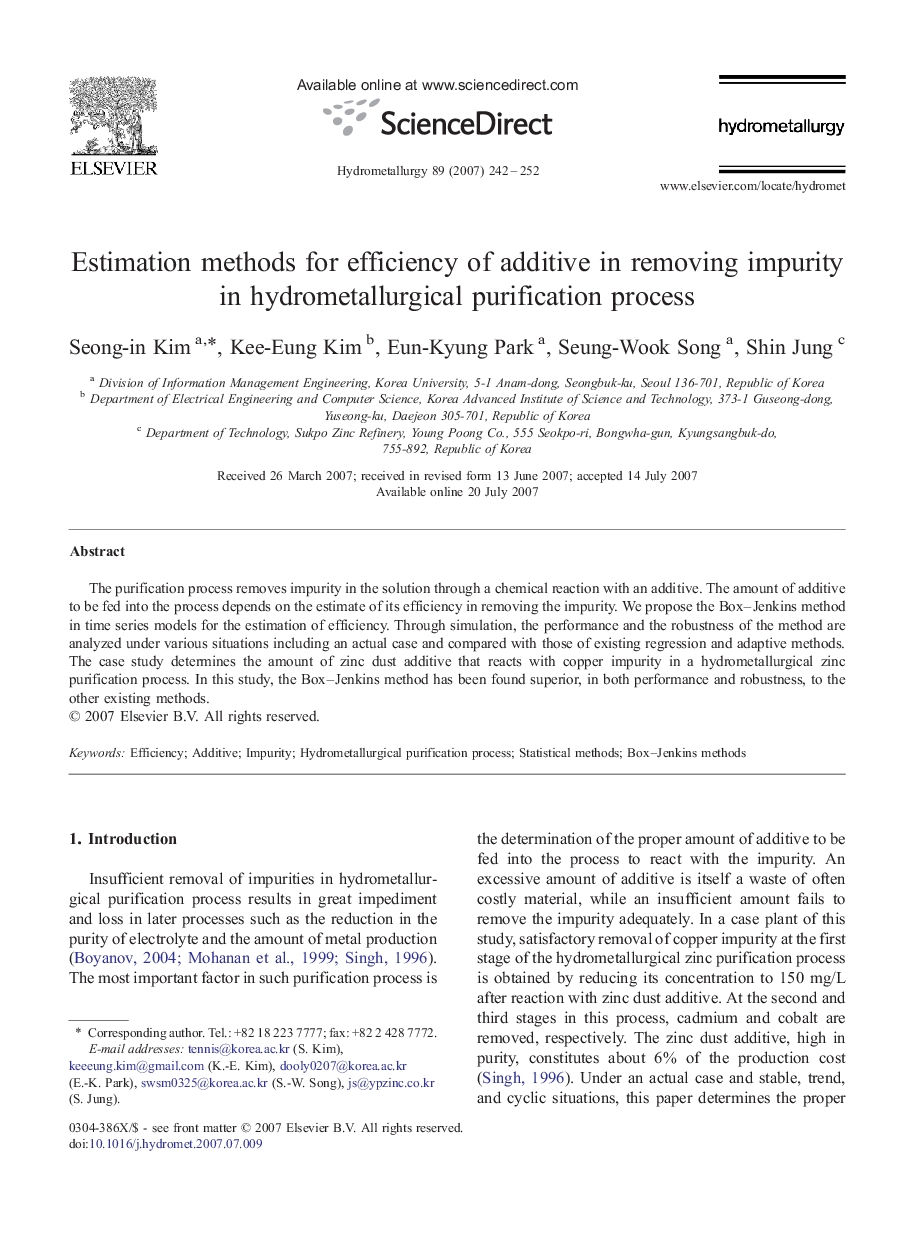| Article ID | Journal | Published Year | Pages | File Type |
|---|---|---|---|---|
| 213467 | Hydrometallurgy | 2007 | 11 Pages |
The purification process removes impurity in the solution through a chemical reaction with an additive. The amount of additive to be fed into the process depends on the estimate of its efficiency in removing the impurity. We propose the Box–Jenkins method in time series models for the estimation of efficiency. Through simulation, the performance and the robustness of the method are analyzed under various situations including an actual case and compared with those of existing regression and adaptive methods. The case study determines the amount of zinc dust additive that reacts with copper impurity in a hydrometallurgical zinc purification process. In this study, the Box–Jenkins method has been found superior, in both performance and robustness, to the other existing methods.
